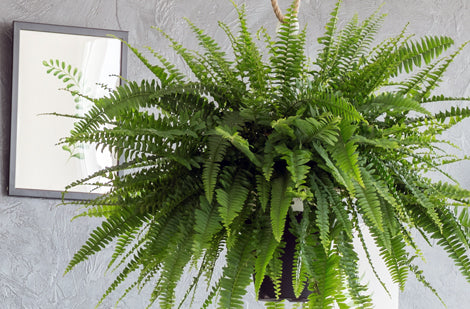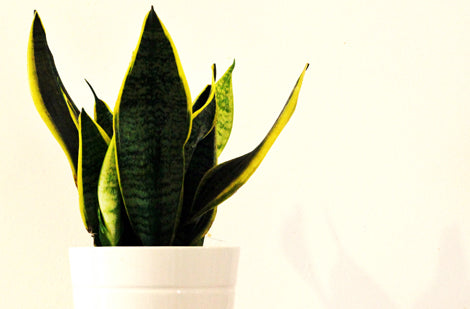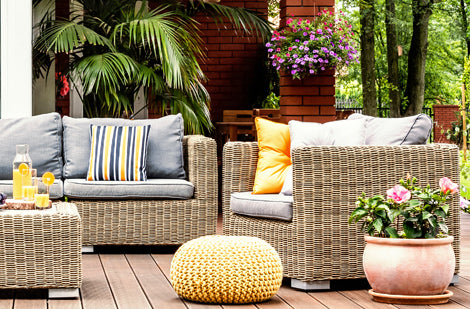Sedum morganianum
Monkey's Tail
Monkey's Tail
Exposure
- Intense
- minimum 4 hours of sun per day
Rusticity
- Small fleshy leaves
- Succulent
- Hanging basket
- Easy care
- Non-toxic
Embrace the charm and whimsy of nature with Sedum morganianum, also known as the "Burro's Tail," a captivating succulent native to Mexico that will cascade gracefully from your pots and planters, adding a touch of elegance and verdant beauty to your indoor décor.
Characteristics and Growing Information
-
Foliage: The Burro's Tail is renowned for its trailing stems adorned with plump, fleshy leaves resembling tiny donkey tails. These leaves, ranging in shades of blue-green to pale green, create a mesmerizing spectacle, especially when grown in hanging baskets or elevated planters.
-
Flowering: During the spring and summer months, the Burro's Tail produces delicate clusters of star-shaped flowers in hues of pink or yellow, adding a delightful touch of color to its cascading foliage.
-
Light: Sedum morganianum thrives in bright, indirect light. Position it near a south-facing window to provide ample sunlight without scorching its leaves.
-
Watering: Water the Burro's Tail moderately, allowing the soil to dry completely between waterings. Avoid overwatering, as this can lead to root rot.
-
Humidity: This succulent prefers average room humidity.
-
Temperature: The Burro's Tail flourishes in warm temperatures, ideally between 65°F and 80°F (18°C and 27°C). Protect it from frost and extreme cold.
-
Repotting: Repot your Sedum morganianum every two years or when the pot becomes too small. Choose a slightly larger pot with well-draining soil specifically formulated for succulents and cacti.
-
Propagation: Propagating the Burro's Tail is simple and can be achieved through stem cuttings or leaf propagation. For stem cuttings, take 2-3 inch cuttings, let them callous over for a few days, and then plant them in moist soil. For leaf propagation, place individual leaves on moist soil, ensuring the base is in contact with the soil, and allow roots to develop before transplanting.
Uses
-
Hanging Baskets: The Burro's Tail is a showstopper in hanging baskets, allowing its cascading stems to gracefully drape over the sides, creating a mesmerizing focal point in your home.
-
Elevated Planters: Elevate the Burro's Tail on shelves, plant stands, or window sills to showcase its trailing beauty and add a touch of vertical interest to your décor.
-
Rock Gardens and Living Walls: Incorporate the Burro's Tail into rock gardens or living walls, where its cascading stems can interweave with other succulents and create a tapestry of textures and colors.
Additional Tips
-
During the growing season (spring and summer), fertilize your Sedum morganianum once a month with a diluted fertilizer for succulents to encourage optimal growth and vibrant foliage.
-
To maintain a balanced shape and promote branching, gently prune overly long stems during the spring or fall.
-
The Burro's Tail is slightly toxic to pets and children. Place it out of their reach as a precaution.
Plant details
Dimensions
Dimensions
Characteristics
Characteristics
Habit:
- Drooping
Flowering colours:
- Pink
Plant needs
Plant needs
Watering:
- Let dry completely
Maintenance:
- Easy
Soil requirement:
- Well drained. Potting soil for succulents and cacti
Features
Features
Resistance:
- Drought
Attract:
Use:
- Table
- Hanging pot
- Summer terrace
Attribute:
- Plump leaves

Related articles
-

Potting House Plants: which pot to choose
Read the articleBien qu'une plante puisse passer plusieurs mois et parfois même plusieurs années dans le même pot, avec le temps ses racines envahissent tout l'espace disponible. Il devient important de choisir...
-

African violets
Read the articleMembre de la famille des gesnériacées, la violette africaine offre une floraison abondante et continue à qui sait respecter ses besoins culturaux. Ses fleurs, aux formes diverses et aux couleurs...
-

The Complete Guide to Buying and Caring for Ind...
Read the articleBringing a touch of nature to your home with plants is a great idea! Not only do they beautify your living space, but they also help purify the air. However,...
-

Make your own terrarium
Read the articleVous avez envie d’ajouter un peu de verdure à votre intérieur, mais n’avez jamais eu le pouce vert? Facile à réaliser, peu coûteux et nécessitant un entretien minime, le terrarium...
-

Create a garden with succulents
Read the articleLes plantes grasses n’ont pas leur pareil pour créer des arrangements à la fois impressionnants par leurs couleurs, leurs formes et leurs textures et faciles à entretenir. Qu’on les agence...
-

Houseplants to discover - Butterfly Palm or Are...
Read the articleDypsis lutescens, anciennement Chrysalidocarpus lutescens
-

-

-

Houseplants to discover - Madagascar Dragon Tree
Read the articleDracéna de Madagascar ou Dracaena marginata
-

-

Houseplants to discover - Ferns
Read the articleDivers noms botaniques, dont Nephrolepis exalata (fougère de Boston), Davallia fejeensis (fougère patte de lapin), Asplenium nidus (fougère nid d’oiseau), Platycerium bifurcatum (fougère corne d’élan) et beaucoup d’autres.
-

-

-

-

Edible Flowers: Top 5 for Garden and Kitchen
Read the articleOffrant une belle gamme de couleurs, de formes et de textures, les fleurs comestibles enthousiasment les amoureux de jardinage et de cuisine.
-

Tropical Flowering Plants: A touch of the exoti...
Read the articleLes plantes tropicales à fleurs ont tout pour faire tourner les têtes! Colorées, odorantes, généreuses, elles n’ont pas leur pareil pour égayer une aide de repos, un balcon, une terrasse....
-

Keep a palm tree on the terrace - why not!
Read the articleDifficile de résister à l’appel des tropiques quand le soleil et les températures clémentes se pointent le bout du nez. Rien de mieux qu’un palmier sur la terrasse ou le...
-

Bringing Outdoor Plants Indoors for the Fall
Read the articleThe arrival of autumn, with its cool nights, announces the time to bring some plants inside to protect them from frost. However, don't rush. Let's enjoy the last beautiful sunny...
-

When and how to repot house plants
Read the articleAlthough a plant can spend several months and sometimes even several years in the same pot, over time its roots invade all the available space.
-

How to select the best houseplant potting soil
Read the articleIl est important d'adapter le substrat utilisé au type de plante. Plusieurs mélanges sont possibles à partir de terre brune, de mousse de tourbe, de perlite ou de vermiculite. Pour...


























